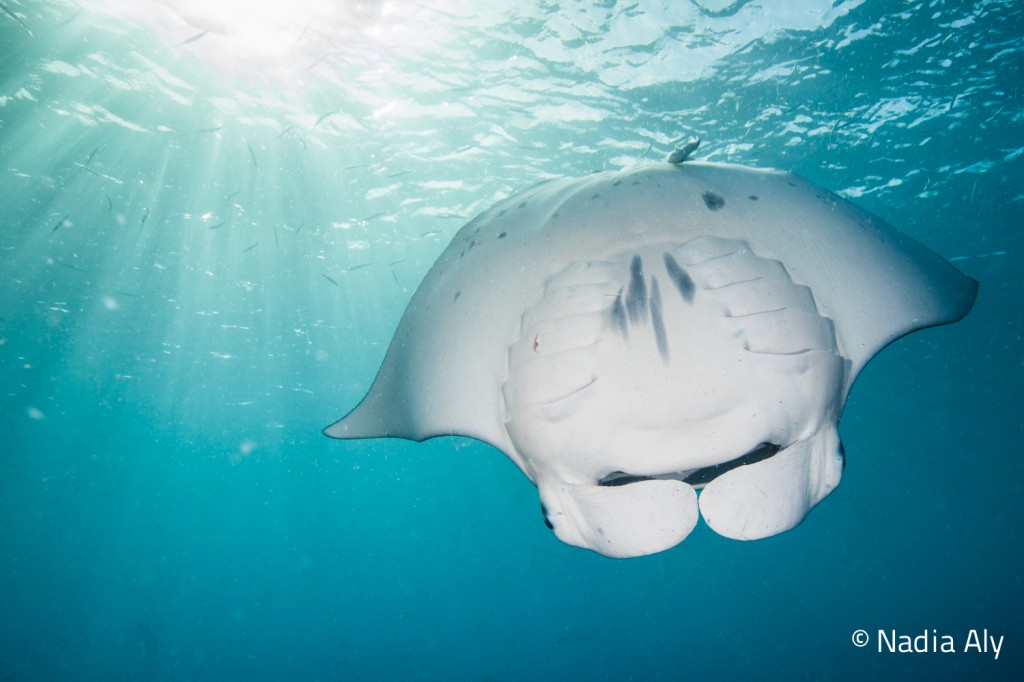The new law offers protection to both the giant and the reef manta throughout Indonesia’s exclusive economic zone, an area covering 2.3 million square miles of ocean. This is particularly welcome news coming from a country that has been the world’s largest exporter of shark and ray products for the past 30 years, signaling a change in perception that could set an invaluable precedent for other, similar nations. This decision came as a result of a review by the Indonesian Ministry of Marine Affairs and Fisheries and the Indonesian Institute of Science, which recognized the economic value of the manta as an important catalyst for the new legislation.
The income generated by dive tourism has always been an important argument when it comes to the conservation of any charismatic marine species, and Indonesia benefits hugely from the industry. As the world’s largest archipelagic nation, a huge number of divers and snorkelers visit Indonesia each year, and the opportunity to see mantas in their natural habitat is one of its biggest attractions. Manta populations aggregate particularly around Bali, Flores, the Komodo National Park and Raja Ampat; each place offers the rare possibility of seeing both species of manta (manta birostris and manta alfredi) at the same time. Sharif Sutardjo, the Minister of Marine Affairs and Fisheries, recognizes the value of the natural presence of these creatures in his country’s waters, saying, “It is important for Indonesia to maximize economic returns from our marine resources.”
A recent scientific study led by Wild Aid, Shark Savers and the Manta Trust estimated that the manta-tourism industry generates as much as $15 million in Indonesia each year, while the destructive practice of catching and killing mantas for parts used in traditional Chinese medicine was estimated to generate an annual total of just $400,000. Manta products fetch just $40 to $500 in the local fish-market, making the animals worth 2,000 times as much alive as when they are dead. The results of this study directly influenced the new protective legislation, with the Director of the Ministry’s Marine Conservation Directorate, Agus Dermawan, expressing his hope that, “if managed properly, Indonesia could become the top manta tourism destination on the planet.” There is no doubt that the agreement is not only beneficial to the mantas themselves, but to the people whose livelihoods are boosted by the substantial revenue they generate.
As any diver who has been privileged enough to see these spectacular creatures underwater knows, the economic importance of the manta is just a small part of its real value. I was fortunate enough to dive with the mantas of Indonesia off Flores just a few months ago, and their otherworldly beauty is remarkable. Mantas are an utterly unique species — their conservation is vital simply because to lose such magnificent animals would be nothing short of tragic, regardless of their perceived value as either a tourist attraction or a component in Chinese medicine. They are also, like every other species, a vital part of their ecosystem. The upset of that delicate balance jeopardizes the future health of the reefs for which Indonesia is currently so famous.
Currently categorized as Vulnerable to Extinction by the IUCN Red List, this legislation could not have come sooner for the mantas. Despite being afforded a certain level of protection internationally at last year’s CITES convention, mantas continue to be fished indiscriminately, particularly throughout Southeast Asia. Lack of education combined with greed makes them a prize for commercial and artisanal fishermen alike; they are targeted specifically for their gill rakers, which have no proven curative properties. Overfishing, whether directly or as a result of indiscriminate fishing methods, is particularly damaging to manta populations due to their slow reproduction rate and the length of time it takes them to reach sexual maturity.
Although the Indonesian government’s decision to protect the manta in national waters is undoubtedly important to ensure the species’ future, it will be an incredibly difficult law to enforce. The fulfillment of the agreement relies on the cooperation of local fishermen, many of whom rely on big catches like manta rays to support their livelihoods. And while there is demand, there will be supply. The sheer vastness of the area to be policed, and the susceptibility of local police to corruption, will also hinder the legislation’s success. However, the very fact that this law has passed is a hugely positive step. The recognition of a live manta’s worth is an important precedent that could spark similar actions around the world. Establishing the long-term importance of fish like manta rays and sharks is a major part of the battle for their conservation. Indonesia is not the first country to offer its manta rays protection; it joins Australia, Ecuador, the Maldives, Guam, Yap, Palau, the Philippines, New Zealand, Honduras and Mexico in its fight for the species’ survival. However, it is our hope that Indonesia’s admirable actions last week will ensure that is not the last.


